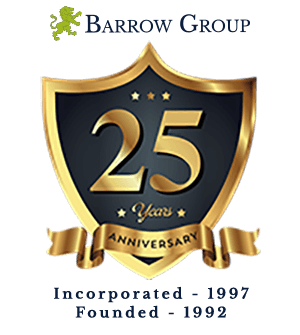As the owner or CEO of a temporary staffing agency, you may place employees at hundreds of different host sites. Barrow Group’s uniquely qualified team of staffing experts can help you find the right Workers’ Compensation and Liability coverages to protect against the varied risks at each one.
Temporary Staffing Insurance
Schedule a Consult
We would love to talk with you about your insurance needs. Fill out the form below and we’ll be in touch shortly to set up a time for a consultation.
Schedule a Consult
We would love to talk with you about your insurance needs. Fill out the form below and we’ll be in touch shortly to set up a time for a consultation.
Insurance for PEOs
As a PEO pro, you take your responsibility for ensuring your clients’ interests to heart. Juggling the concerns of multiple clients in one basket of benefits and services can be a challenge. As one of the first insurance brokers to specialize in providing coverage for Professional Employment Organizations, Barrow Group understands the challenges you face in protecting your clients from risk. We can provide you with access to the tailored coverages you need to protect your clients’ key assets.
Film & Television Insurance
Your film, television, or video production isn’t just business. It’s a labor of love and commitment with a lot riding on its success. You face multiple risks at each stage of development, from on-set accidents to conflicts over distribution. Barrow Group’s director of film & television insurance understands that better than your average insurance broker. She knows exactly the kinds of coverage you need to protect your investment.






WHAT OUR CLIENTS HAVE TO SAY!
Staffing One has been a Barrow Group client for more than 14 years. Bob Barrow and his team consistently provide timely information to assist us in making effective decisions regarding all of our coverage. They inform us of industry trends and how it will likely affect our strategic plans. Perhaps just as important is their dedication to client service. The Barrow Group team continues to be an integral participant in the growth of Staffing One. We are always pleased to refer them to other staffing firms because we know that they will provide cutting-edge service to protect any staffing firms’ liability and increase their bottom line profits.
Staffing One
Thank you Kevin, Molly and staff for being instrumental in the insurance needs of Elevate Workforce, Inc. The Barrow Group has been a trusted resource for us and gone above and beyond to help our company to choose the coverages needed to best suit our needs and quickly responds to any questions we may have. We have appreciated our partnership.
As the owner of a staffing agency, about 10 years ago, I found myself trying to understand workers’ compensation and how I could save money and have a safe workplace for my employees. No one seemed to have any answers to questions about staffing and workers’ compensation until I was told about Barrow Group and Kevin Kilcoyne in Atlanta.
The first time I spoke with Kevin, I knew I made the best decision possible for my workers compensation program. With Kevin’s training and help, Valley Staffing Inc.’s injuries are way down, and we are no longer in assigned risk. He always has time to help with any issues Valley Staffing may have, and he makes sure that we get the best rates possible.
I would highly recommend Barrow Group and Kevin Kilcoyne because they have your best interest at heart and are always there for you.
Barrow Group and Kevin Kilcoyne don’t treat you as a number, but they really care about the people they work with.
Regina Delph, Valley Staffing
For the past six years, it has been a real pleasure having the Barrow Group as our key insurance agent. With their expertise and up-to-date knowledge of the insurance industry, we have been able to obtain excellent insurance coverage with top rated carriers at very cost effective rates. When it comes to customer service, at the Barrow Group, you can depend on direct personal attention with prompt service that gets results. I highly recommend the Barrow Group. We won’t settle for anything less, and neither should you.
From the inception of our relationship, and for the past seven years, my experience in dealing with Barrow Group has been nothing short of excellent! I cannot even begin to describe my elation at not having to explain to an insurance agent the intricacies of the staffing business, which I had to do for 16 years before meeting Barrow Group. Thankfully for me, Barrow Group specializes in the staffing industry.
Hello Ms. Jaqueline,
I could not let the day go by without saying thank you so very much for all you’ve done to assist LOVE–Nurse & Allied Staffing in obtaining coverage. Your professionalism, attention to detail, and superb customer care has been greatly appreciated and unmatched within your industry.
L.S. Mondy, LOVE–Nurse & Allied Staffing
On behalf of Suzanne DeLaurentiis Productions, I would like to thank Natasha Bobbit for her forethought and thoroughness with our production package policy. Natasha has been an instrumental part of our success, and my experience working with her has been nothing, but great.
Natasha thank you! You have been so wonderful to work with.
Leilani Turner, Loma Linda University




